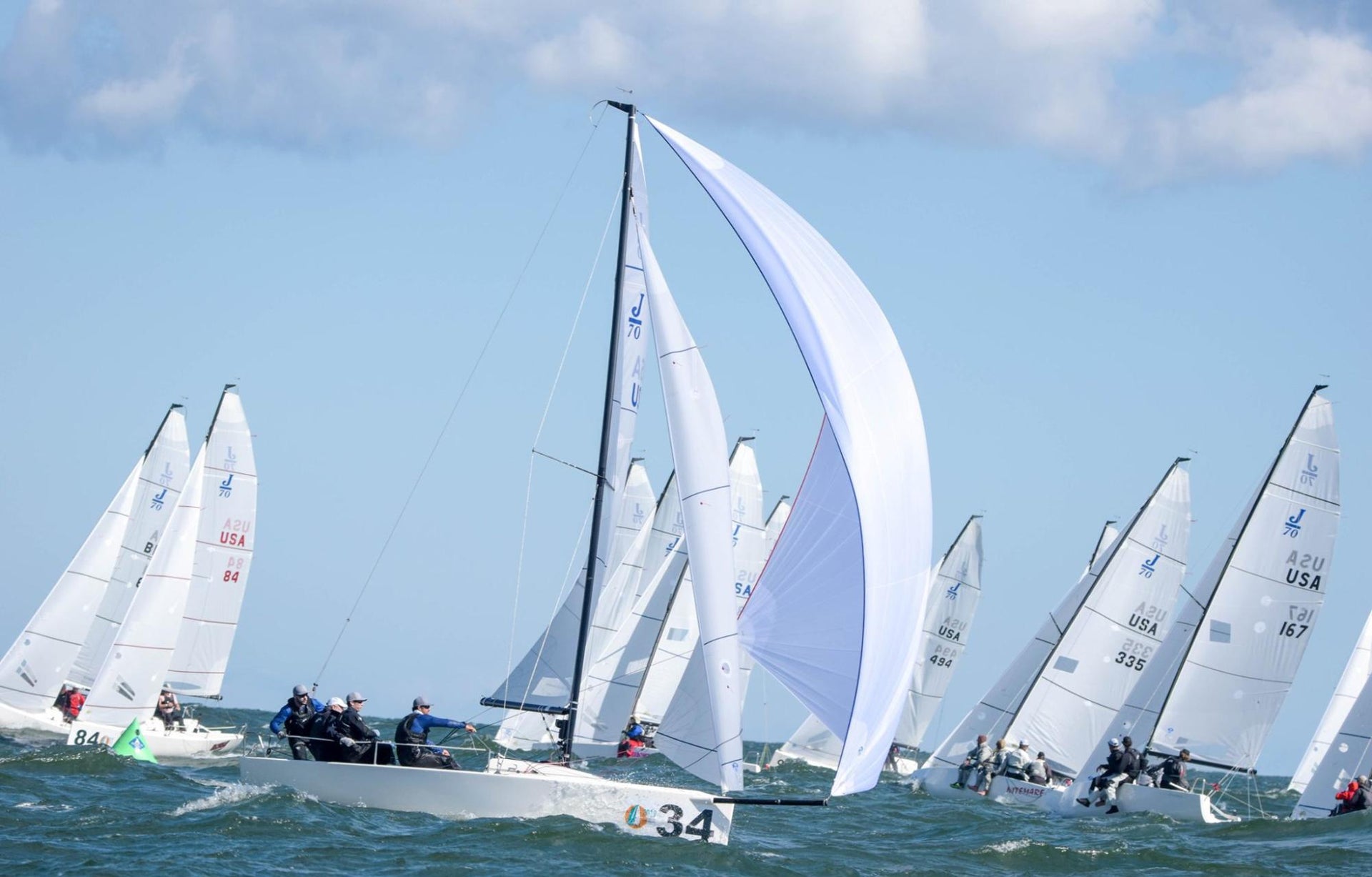WHICH MAINSAIL IS BEST FOR YOUR J/70 TEAM?
WHICH MAINSAIL IS BEST FOR YOUR J/70 TEAM?
A Complete Guide Considering Rig Tendencies and Batten Choices

Trying to stay up to date with all the latest testing and sail development in a highly competitive class like the J/70 can be quite daunting. How do I pick the right sails? Does crew weight matter? Does the venue matter? What about my mast? How do I know how much pre-bend I have? What do I do with all these battens?! There is a lot to think about for sure, but in this article I will try to simplify some of these elements to help you make the right choice for you and your boat.
Choosing the right mainsail for your team is imperative. One of the major factors in designing a mainsail is the bend characteristics of the mast. With over 1,500 J/70s built, there is bound to be a bit of variance in bend characteristics – especially now that there are two different brands of spar out there – the Southern and the Selden. Not only are there inherent differences in stiffness, but where you carry your rake (more rake = more bend) and how swept your spreaders are will also greatly impact the bend tendencies. North Sails offers two brilliantly designed maisails, both of which are garnering tremendous results around the globe. By getting to know your mast, and learning how to use your battens and rig tune, you will be able to have success with either sail. But you may find that one sail will fit your rig better than the other.
Let’s keep it simple to start out – there are two choices – the XCS-2 and F-1. The XCS-2 is fuller than the F-1 and was therefore designed to fit perfectly with masts that tend to carry more bend. A bendier mast requires a fuller sail shape so that it won’t invert too quickly when the breeze comes up and the mast starts bending. The F-1 is a flatter overall sail designed to accommodate stiffer masts. If the mast doesn’t bend very much, you need a flatter sail to avoid extra drag – especially in light air when there is not enough pressure to bend the rig and it’s too light to use backstay.
How Can You Tell Which Sail is Best For Your Mast?
The first thing you’d want to check is your pre-bend at “base”. You will need the mast up with the upper shrouds set to a tension of 16 on the PT2 Loos gauge. For the lower shrouds, set them so they have a tension of 10 on the gauge with the mast looking straight, and then take another 2 turns off each lower shroud so they are loose. You’ll want to find a pre-bend checker which is essentially a ruler that can be hoisted up the mast track (see photo below). Hoist the bend checker up the sail track on the spinnaker halyard (don’t forget to tie a line to the bottom of the checker so you can pull it back down!). You want to get it just above the spreaders where the max bend is. Now you will pull the main halyard up against the gooseneck (pinch it right into the bottom of the sail track). As you look up the mast, you’ll see the main halyard coming in contact with the bend checker. Read the bend checker to determine how much pre-bend you have at “base.” We’ve found that the range can be anywhere from 1.25” to just over 2”. Quite a range!! If your mast shows less than 1.75” of pre-bend, it’s likely that the F1 will fit your rig better and if you’re over 1.75”, then it’s more likely a good fit for the XCS-2.

What if your mast is right at 1.75”?? Perfect! Try both! (Kidding but probably not a bad idea!). Another test you can do to learn about your mast stiffness is to wind the rig all the way up to the our tightest recommended rig tune setting which would have both your upper shrouds and lower shrouds reading 29 on the gauge. The number of turns it takes for you to get to this setting will tell you a lot about your mast. Again, we have found quite a bit of variance here from rig to rig. If it only takes you about 7 turns on the uppers and 5 turns on the lowers to achieve these tensions, that is a sign that your mast is quite stiff and probably better suited for the F-1. If it takes you closer to 11 turns on the uppers and 8 on the lowers, that is a sign that your mast is bendy and probably better suited for the XCS-2. Nine turns on the uppers and 7 on the lowers would be somewhere in the middle. One more telltale sign you can use to determine your mast stiffness is by observing the overbend wrinkles on the main while sailing upwind. There needs to be enough wind so that you’re using 70-100% of your backstay. So your rig tune should be tight. While sailing, play through your range of backstay and observe where your main is showing the biggest overbend wrinkles. They should be all below the window in the luff of the main (to see the jib leech) until you’re at the point of full inversion. If you see a very large “hinge” in the main that goes from the forward end of the bottom batten, up to a point above that luff window – that is a sign that your mast is on the bendy side and probably better suited for the XCS-2. If you never get to the point of the full “hinge” and all of the overbend wrinkles stay below the luff window, that is a sign that your mast is on the stiff side and probably a better fit with the F-1.

No matter which mainsail, you end up choosing, you have a lot of range depending on which battens you put in. Using stiffer battens will give you a flatter sail shape while softer battens let the sail become fuller. This is extremely useful when trying to make your sail shape fit the mast in a given condition. If you decide to use the F-1 main but are sailing in a venue where you know you will want a little bit of extra power (say it’s overly lumpy compared to wind strength), you can error on using the softer battens in the Main to help give the sail extra depth for more power. Conversely, if you have the XCS-2 main but want the option to keep it flatter (say it’s blowing 14 knots but dead flat water) you can go to heavier battens to get rid of some depth in the main.
The key takeaway here is that is very important to learn your rig tendencies so you can make the best decision possible for your team whether you’re looking for your all purpose sail, or for a venue specific sail choice. Combining this knowledge with the correct batten choice will give you peace of mind in knowing that you can achieve the perfect sail shape for any condition. As always, consult your favorite North Sails J/70 expert for more information or any questions about your sail choice!









